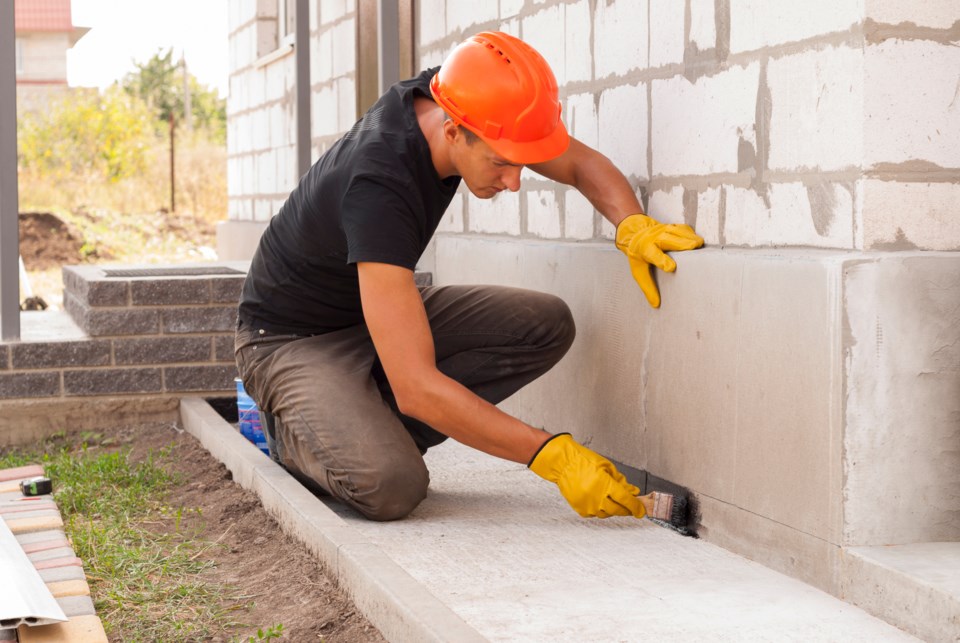
Elgin has some of the Midwest’s most architecturally beautiful homes. Many of these historic structures, from Queen Anne Victorians to classic brick colonies, date back well over a century. While these historic homes offer character and craftsmanship, they also come with their own set of maintenance challenges, especially when it comes to their foundations. Basement waterproofing in brick basements is vital for both comfort and structural integrity.
Comprehending The Unique Viciousness Of Historic Brick Foundations
Elgin’s old homes are often built with hand-laid clay brick foundations. These foundations were made using materials and construction methods from a bygone era. These bricks were typically made with softer, lime-based clays. Over time, exposure to moisture, freezing-thawing cycles, and ground movement can weaken the mortar and brick joints.
Moisture enters not only through large cracks or openings. It can seep in gradually through deteriorated or poorly maintained mortar joints. Tuck-pointing—the process of replacing mortar joints—is a vital line of protection, but even minor deterioration can cause serious water problems.
Why Elgin Basement Waterproofing Is Important
It is important to note that the Midwest’s climate fluctuations can lead to foundation issues. Snowmelt in the spring, heavy storms during summer, and freezing-thawing winters all put pressure on basement walls. The stress in a historic brick foundation may manifest in efflorescence and/or leaks at mortar joints.
Acting quickly is essential for homeowners facing such challenges. Water in your basement can not only be hazardous to the air you breathe and your personal possessions, but also accelerate the deterioration of your foundation. Get trusted basement waterproofing help in Elgin, IL, before these minor issues become major structural problems.
Tuckpointing – More Than Cosmetic Repair
Tuckpointing is replacing crumbling or eroded material, such as mortar, with new, durable materials that blend seamlessly with the original masonry. This improves not only the appearance of the walls but also their resistance to moisture penetration. When renovating historic houses, it’s essential to use compatible types of mortar to avoid damaging brickwork.
Professional masons experienced in historical preservation match the original mortar’s texture, color, and composition to maintain a home’s appearance. When properly done, tuckpointing will extend the life span of a brick’s foundation for decades.
Exterior Membrane Systems: A Hidden Shield
While interior sealants, sump pumps, and other solutions can treat the symptoms of water penetration, exterior waterproofing addresses the problem directly. An exterior waterproofing system requires excavating around the home’s base, cleaning the bricks, and applying a durable and rubberized membrane to prevent moisture from reaching the masonry.
Sometimes, a drainage system or French drain is installed to redirect water from the foundation. This method can be particularly useful for brick foundations older than 20 years because it avoids prolonged water contact, which could weaken bricks and mortar. Despite being more labour-intensive than other methods, this investment will provide the most comprehensive defense from water invasion.
Grading Landscape Drainage As The First Line Of Defense
Often ignored, the grading surrounding your home can play a vital role in waterproofing. The slope of the soil away from your foundation should be at least 6 inches for the first 10 feet. In historic neighborhoods that have been landscaped over the decades, improperly graded soils are a common problem.
Improving the yard and adding swales can keep water out of the cellar. These steps not only help protect the basement but also add curb appeal to your house and prevent erosion.
Combining Modern Science & Historic Sensibility
Basement waterproofing Elgin involves a careful balance between preserving the historic character and implementing modern solutions. A holistic approach will typically include a combination of exterior membrane installation, tuckpointing, and grading. In some instances, interior drain systems, dehumidifiers, or even foundation reinforcement might be recommended based on the condition and age of the home.
It is crucial to choose a contractor experienced in historic conservation. The contractor will not only be familiar with the structural aspects of older brick foundations, but they will also understand and respect the house’s aesthetics.
Preserve History, Protect Your Investment
Your historic Elgin is more than just a house. It’s an important part of the city’s history. A properly waterproofed basement not only helps to prevent water damage and expensive repairs but will also keep your home strong for future generations.
You should always take time to plan and implement the best waterproofing strategy, whether it’s a minor foundation leak or a major renovation. If you choose the right method, you will be able to preserve your house’s history while having a dry, comfortable, and healthy basement.





